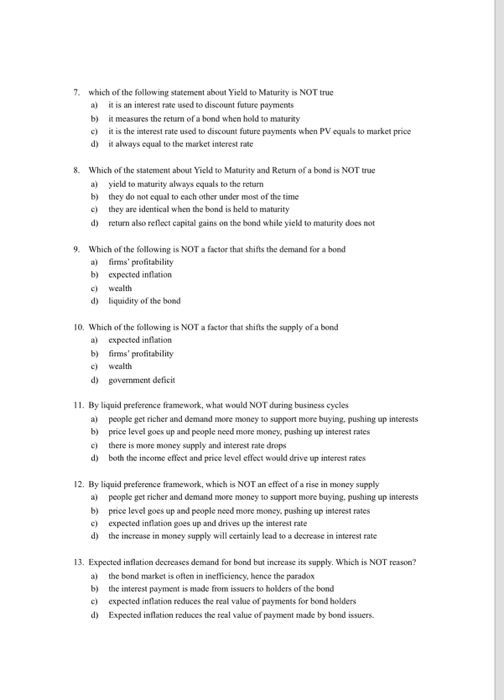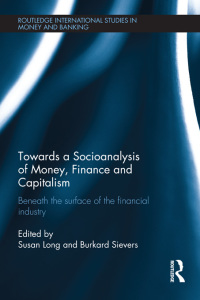Please help all questions

7. which of the following statement about Yield to Maturity is NOT true a) it is an interest rate used to discount future payments b) it measures the return of a bond when hold to maturity c) it is the interest rate used to discount future payments when PV equals to market price d)i always equal to the market interest rate 8. Which of the statement about Yicld to Maturity and Return of a bond is NOT true a) yield to maturity always equals to the return b) they do not equal to each other under most of the time c) they are identical when the bond is held to maturity d) return also reflect capital gains on the bond while yield to maturity does not 9. Which of the following is NOT a factor that shifts the demand for a bond a) fims'profitability b) expected inflation c) wealth liquidity of the bond 10. Which of the following is NOT a factor that shifts the supply of a bond a) expocted inflation b) fims' profitability c) wealth d) government deficit 11. By liquid preference framework, what would NOT during business cycles a) b) c) d) people get richer and demand more money to support more buying. pushing up interests price level goes up and people need more money, pushing up interest rates there is more money supply and interest rate drops both the income effect and price level effect would drive up interest rates 12. By liquid preference framework, which is NOT an effect of a rise in money supply people get richer and demand more money to support more buying. pushing up interests price level goes up and people need more money, pushing up interest rates expected inflation goes up and drives up the interest rate the incrcase in money supply will certainly lead to a decrease in interest rate a) b) c) d) 13. Expected inflation decreases demand for bond but increase its supply. Which is NOT reason? a) the bond market is often in inefficiency, hence the paradox b) the interest payment is made from issuers to holders of the bond c) expected inflation reduces the real value of payments for bond holders d) Expected inflation reduces the real value of payment made by bond issuers








